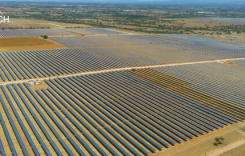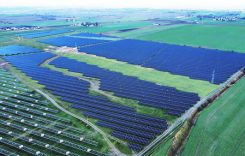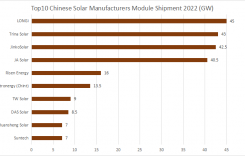Bloomberg NEF has released an analysis of the potential for off-grid photovoltaic power generation and micro-grids with regards to helping 1 billion people currently without clean energy meeting their needs.

The report believes that there are five key factors which indicate that off-grid PV will play a key role in providing universal energy supply. The most import of these factors being the cost of grid expansion. The analysis estimates the cost of establishing connection for each family can range anywhere from $226USD to $2100USD.
It is calculated that the energy cost for household photovoltaic systems will be about $1.5USD/kWh, and $0.29-$0.77USD/kWh if it comes from the microgrid. The report goes on to state that the electricity bill for the new connection will be $1/kWh, which is higher than the energy cost of deploying the microgrid itself.
According to the analysts, by 2030, the market size of household photovoltaic systems and microgrids will reach $64 Billion USD. Consequently, approximately 15% of the population without electricity resides in urban areas. Therefore, public utility companies should place focus on extending the grid to these problem areas.
However, by mid-2020, distributed technology will have built supply chains and provided cheaper components. Additionally, there will be far fewer economically viable areas for grid expansion and microgrids to compete over.
Bloomberg believes, based on these assumptions, 238 million households will receive energy by 2030, and 72 million of which will use photovoltaic systems while 34 million will receive their energy from the microgrid.
Analysts predict that the general electricity supply market will reach $353 billion USD, only half of what the International Energy Agency (IEA) has estimated on multiple occasions. However, Bloomberg stressed that the IEA believes that microgrids will play a pivotal role in achieving universal energy supply. According to analysts, the IEA does estimate that the system cost will be higher than the cost that the market has already experienced.
Large oil corporations such as Shell have in-house teams building microgrids and selling large-scale consumer photovoltaic systems. According to reports, 6 of the 20 largest oil and energy companies have already committed to providing energy services to 52 million people by 2020. Analysts emphasize that these efforts are not based on their philanthropic philosophy, but on their rigorous business development plans for emerging markets.
According to the report, the transition from centralized power generation to distributed off-grid systems will have profound impacts on the deployment, improvement and maintenance of power systems. This type of drastic change will leave a void which will need to be filled by entrepreneurs. Furthermore, the way of energy retailing and distribution can also be completely remodelled and optimized. For example, based on calculations, increasing the daytime load of agricultural activities (such as irrigation and refrigeration) can reduced the microgrid energy cost by about 18%.











